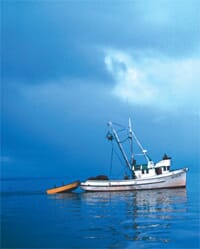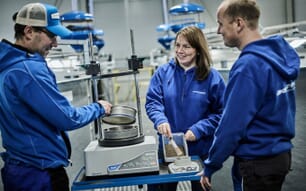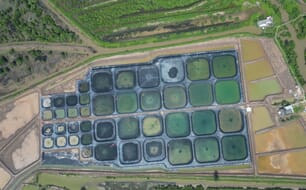 The Great Salmon Run: Competition BetweenWild And Farmed Salmon The Great Salmon Run: Competition BetweenWild And Farmed Salmon |
Key Points
- The origins of salmon farming can be traced back to fertilization trials in Europe in the second half of the eighteenth century. Hatcheries were established one century later in both Europe and North America. Hatchery-based enhancement programs were introduced at a significant scale only after the 1950s in Japan, the USSR, United States and Canada. The modern techniques of salmon culture in floating sea cages were initiated in Norway in the late 1960s.
- By the 1980s and 1990s, commercial salmon farming was well established in many temperate countries around the world (Norway, Scotland, Chile, Canada, etc.). In 1996, salmon aquaculture overcame the salmon fishing industry as the most important supplier of salmon products worldwide. By 2004, global production of farmed salmon exceeded wild harvests by more than one million metric tons (mt).
- There is little potential for further growth in countries such as Scotland and Ireland. Excessive regulatory pressure and conflicts with user groups also limit development in the United States and Canada. Salmon farming appears to have the brightest future in Chile due to ideal environmental conditions and a favorable business climate. Average annual growth rate of the industry between 1984 and 2004 was 42 percent (FAO 2006).
- The United States has developed advanced hatchery and marine growout technologies but ocean-pen production accounts for less than 1 percent of global supply. Alaska placed a permanent moratorium on private, for-profit farmed salmon and salmon trout in 1988, but still allows enhancement programs, which account for a large share of its harvest.
- Increased supplies have generally resulted in falling prices. These low prices appear to have created more problems for the traditional fisheries than for farmed producers since the latter have managed to reduce production costs and improve marketing while the traditional salmon sector has been slow to adjust.
- Transgenic technologies offer new opportunities and new challenges for expansion of the industry.
Introduction
The culture of salmonids (particularly Atlantic salmon, Salmo salar and salmon trout (Oncorhynchus mykiss) is one of the most important examples of commercially successful intensive aquaculture in the world. It is a demonstration of what can be achieved through conscious investment, innovative research, technological advances and creative marketing strategies. At the same time, it has served to illustrate the dangers of rapid development and depressed prices that result when market capacity to absorb increasing supplies is exceeded.
Of the several salmonid species (including all salmon species and salmon trout) cultured for commercial purposes worldwide, Atlantic salmon is by far the most important. Its native range is the North Atlantic, from New England to Ungava Bay in Canada in the west, Iceland, Greenland and from northern Portugal to the Kara Sea off Russia on the east (Laird, 1996). Its potential for farming is excellent since it is relatively easy to handle, it grows well under culture conditions, it has a relatively high commercial value and it adapts well to farming conditions outside its native range.
Of the five Pacific salmon species that are commercially caught in North America —pink, chum, sockeye, coho and chinook —only coho and chinook are valuable enough for salmon farming. Pink and chum are low value and thus not attractive to salmon farmers. Sockeye salmon is less adaptable for farming because it has lower growth and survival rates, it has a lower fillet yield and it is more susceptible to stress leading to poor product quality. In addition, much less research has been conducted on sockeye salmon aquaculture as compared to species such as Atlantic salmon. Salmon trout (Oncorhynchus mykiss) is also commercially important, can be farmed in freshwater or seawater installations and is often also referred to as “steelhead trout” or “rainbow trout.”
The preliminary sections of this chapter will provide a brief review of the major steps involved in modern salmon aquaculture (primarily based on Willoughby 1999). For the rest of the report, farmed salmon will be considered as including both salmon and salmon trout.
Subsequently, an historical account of salmon ranching and net-pen culture development in different regions of the world is provided. Production trends will be reviewed for each major producing country and the industry as a whole as well as potential for further expansion.
The chapter ends with a brief summary of the major factors that have contributed to the remarkable growth of the industry, some of the major issues surrounding the use of commercial salmon feeds and the potential role of biotechnology in the future of salmon farming.
Further Information
To continue reading this article, please click hereMarch 2007



